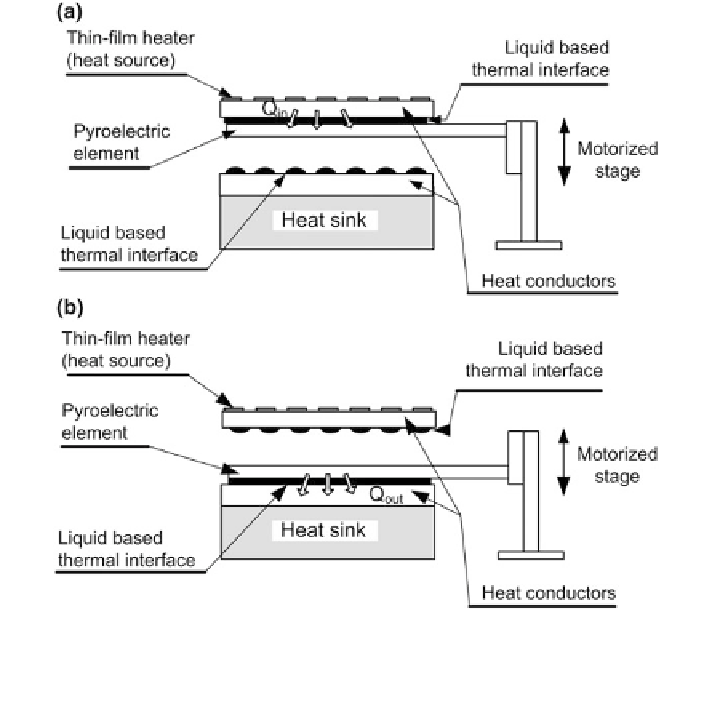Environmental Engineering Reference
In-Depth Information
Fig. 10.21 Pyroelectric energy harvesting device using liquid-based switchable thermal interfaces
working according to the pyroelectric Ericsson cycle, a The pyroelectric material is in thermal
contact with the heat source, b The pyroelectric material is in thermal contact with the heat sink
(see also Cha et al. [
80
])
copolymer material with pyroelectric properties. The pyroelectric material had
electrodes on both sides and was positioned on a glass substrate for reasons of
mechanical stability. The glass substrate with the pyroelectric material (pyroelectric
element) was mounted on a motorized stage and positioned between the heat sink
and the heat source. The contact surfaces of the heat sink and the heat source were
covered with liquid-based thermal interfaces to enhance the heat transfer from the
pyroelectric element to the heat source/sink. The device works in accordance with
the following description. First, the pyroelectric element is moved into physical
contact with the heat source and therefore the material heats up (Fig.
10.21
a). Next,
the electric eld is switched to the low value. The pyroelectric element is then
moved into physical contact with the heat sink and the heat is transferred from the
pyroelectric element to the heat sink by means of heat conduction (Fig.
10.21
b).
The electric
eld is then increased and the cycle can be repeated. During the
experiment, the pyroelectric current and the applied voltage were measured and
based on these measurements the generated electrical power was calculated. The

Search WWH ::

Custom Search